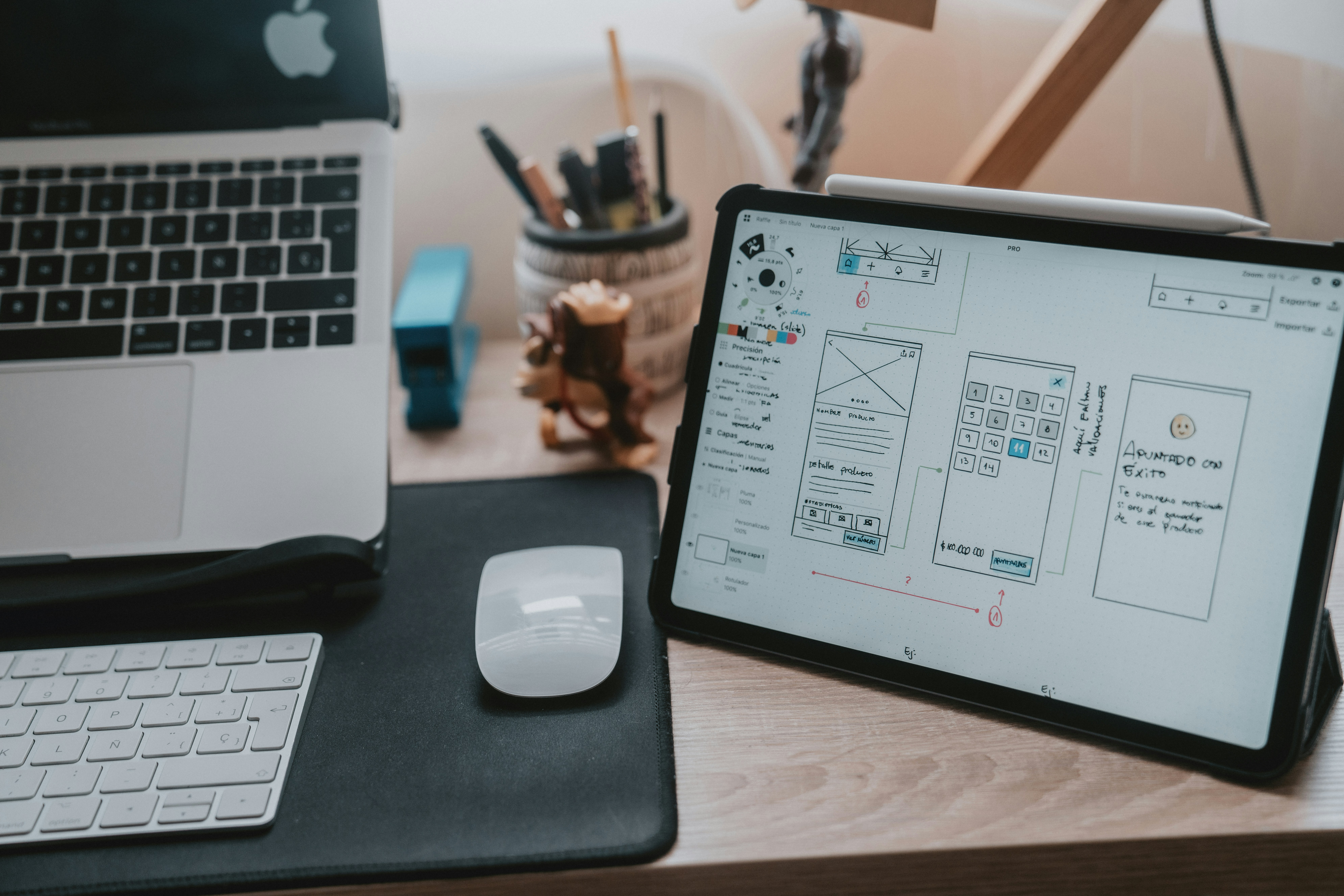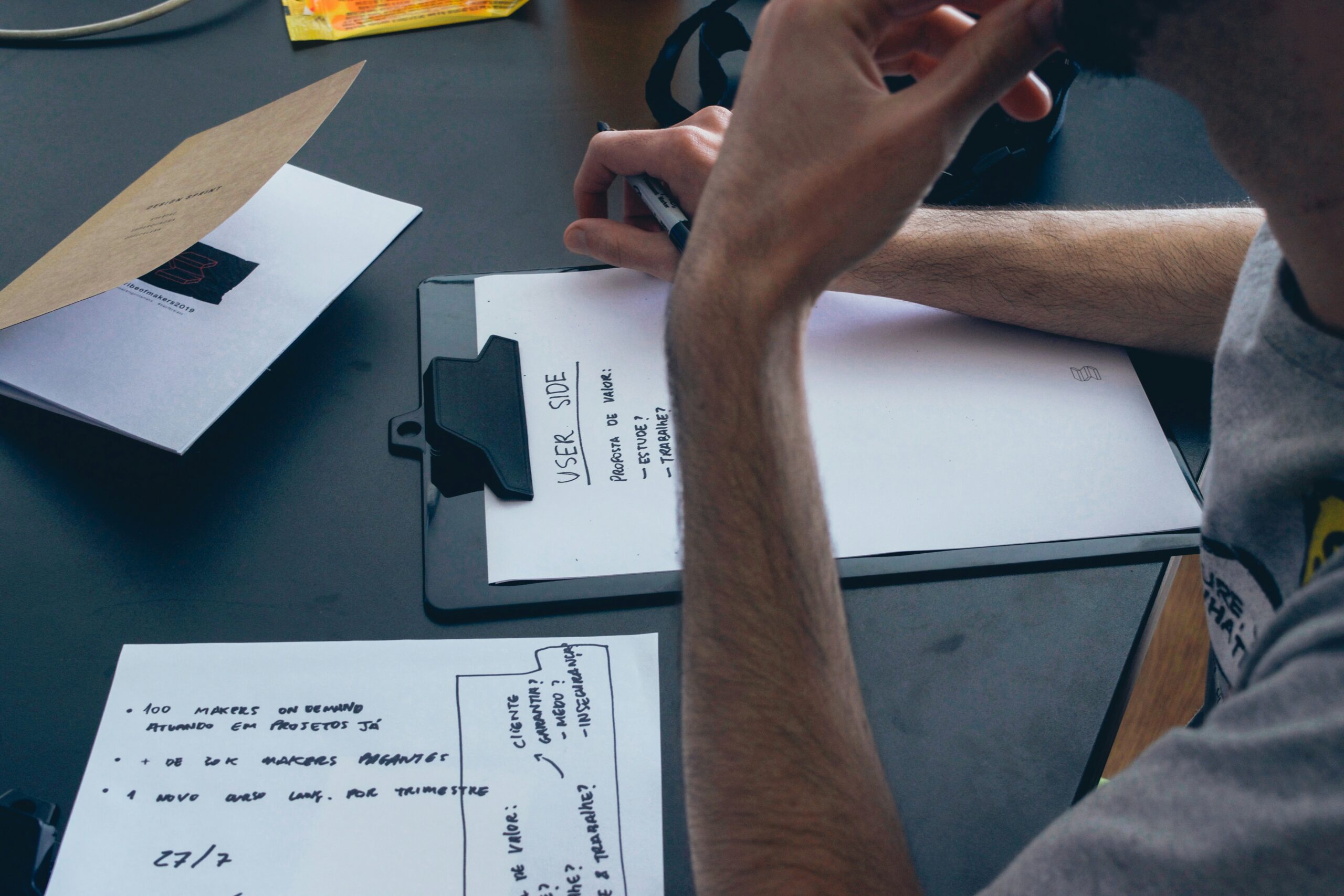Businesses often struggle to create user experiences that truly resonate with their end users. Custom UX design is key to overcoming this challenge. This article will cover the significance of tailored UX solutions for achieving business goals, the essential components of effective designs, and best practices for implementation. By exploring these areas, readers will learn how to enhance customer satisfaction and drive innovation in their projects, like mobile app development and chatbots. Understanding and adopting custom UX design can improve patient engagement and business performance.
Key Takeaways
- Custom UX design enhances user satisfaction and drives customer retention for businesses
- Effective user research informs tailored experiences that meet specific audience needs
- Utilizing analytics tools helps track user behavior to improve design strategies
- Integrating AI and machine learning personalizes interactions for better engagement
- Collaboration among stakeholders is essential for continuous improvement in user experience design
Understand the Importance of Custom UX Design for Business

Unique user experiences play a vital role in driving engagement and improving workflow. Custom UX design enhances navigation and significantly boosts customer retention for businesses, including those in health care. This section examines case studies showcasing successful transformations, highlighting practical insights and the importance of responsive web design in creating effective user experiences.
Recognize How Unique User Experiences Drive Engagement
Unique user experiences drive engagement, as they help customers feel valued and understood. Businesses can craft these experiences by utilizing analytics and user intelligence, allowing them to tailor content based on a comprehensive database of user behaviors. This approach enhances satisfaction and encourages repeat visits, ultimately transforming how a business interacts with its audience.
Identify the Role of Custom UX Design in Customer Retention
Custom UX design plays a crucial role in boosting customer retention by focusing on the specific needs of a target audience. Through methodologies like usability testing and design thinking, businesses can create interfaces that cater to user preferences, leading to a more satisfying experience. When combined with advanced techniques in custom software development and the integration of the Internet of Things, companies can ensure their digital platforms remain intuitive and engaging, encouraging users to return repeatedly.
Key Components of Effective Custom UX Design Solutions

Effective custom UX design solutions begin with user research to tailor experiences that suit specific needs and encourage personalization. Analyzing user flows and building a solid information architecture supports seamless navigation. Creating prototypes and wireframes helps test usability while implementing responsive design principles ensures accessibility across devices for enterprise software.
Analyze User Research Methods to Inform the Design
User research methods are essential for informing custom UX design. Businesses can gather insights that combine creativity with empathy by engaging with clients through surveys, interviews, and usability testing. This research allows software development teams to understand user needs and preferences, ensuring that designs are tailored to meet specific expectations and enhance overall satisfaction.
Evaluate the Impact of User Flows and Information Architecture
User flows and information architecture are crucial in software design as they directly impact how users interact with a user interface. By mapping out clear user flows, businesses can enhance the overall experience, ensuring that users can navigate through a software-as-a-service platform seamlessly. Additionally, integrating machine learning can improve these flows by personalizing user interactions based on their preferences, leading to higher satisfaction and engagement.
Create Effective Wireframes and Prototypes for Usability Testing
Creating effective wireframes and prototypes is essential for testing usability in custom UX design solutions. This methodology allows businesses to visualize the scope of their projects through graphics, facilitating better communication among team members and stakeholders. By incorporating automation in the testing process, teams can quickly gather feedback, ensuring that the final design meets user needs and enhances overall satisfaction.
Implement Responsive Design Principles to Enhance Accessibility
Implementing responsive design principles is crucial for enhancing accessibility in custom UX design. This approach ensures that every customer can interact with a website or application regardless of their device. Businesses can address complexity by focusing on information architecture and iterative testing while delivering a seamless experience that meets diverse user needs.
Tailoring Custom UX Designs to Meet Business Goals

Custom UX design should align with business objectives and target audiences to enhance web design strategies. Solutions tailored to industry-specific needs and trends can significantly boost customer satisfaction in online shopping or a learning management system. Furthermore, ensuring scalable designs allows businesses to adapt and grow effectively, supporting their brand’s ongoing success.
Align UX Strategies With Business Objectives and Target Audience
Aligning UX strategies with business objectives is key to creating a successful mobile app in the retail sector. By understanding customer knowledge and preferences, businesses can design effective interaction designs that resonate with their target audience. This tailored approach meets user needs and provides a competitive advantage in a crowded marketplace.
- Identify customer knowledge and preferences.
- Develop interaction design that meets specific audience needs.
- Create a mobile app that aligns with business objectives.
- Gain a competitive advantage through tailored UX strategies.
Customize Solutions Based on Industry-Specific Needs and Trends
Customizing solutions based on industry-specific needs and trends is essential to enhancing customer experience and increasing productivity. For example, retail businesses can redesign their web development strategies to streamline purchasing processes and reflect customer behavior, ultimately influencing their decision-making. Adjusting elements like pricing presentation and checkout workflows can significantly improve satisfaction and retention levels.
- Focus on industry-specific needs for better solutions.
- Analyze customer behavior to inform design choices.
- Implement web development strategies that optimize productivity.
- Ensure pricing strategies enhance the customer experience.
Ensure Scalability of Designs to Accommodate Future Growth
To ensure scalability, businesses need to focus on creating custom UX designs that can grow alongside their operations. This involves understanding user needs and facilitating effective stakeholder communication throughout the development process. By investing in custom app development and thoughtful graphic design, companies can achieve a higher return on investment while being better equipped to adapt to future changes in the market.
- Focus on understanding user needs for scalable designs.
- Facilitate communication among stakeholders during development.
- Invest in custom app development for future growth.
- Utilize graphic design to enhance user experience.
- Achieve higher return on investment through adaptable solutions.
Measuring the Impact of Custom UX Designs on Business Performance

Measuring the impact of custom UX designs on business performance involves identifying key performance indicators (KPIs) that reveal the effectiveness of the design. Utilizing analytics tools helps track user behavior and engagement, allowing businesses to assess how well their UX strategies meet user needs. Finally, understanding these initiatives’ return on investment (ROI) underscores the value of investing in tailored user experiences.
Identify Key Performance Indicators for UX Effectiveness
Identifying key performance indicators (KPIs) for UX effectiveness is essential for businesses aiming to transform their online presence with custom UX design. Metrics such as user engagement, satisfaction scores, and conversion rates provide valuable insights into how well a design serves its audience. By tracking these KPIs, businesses can make data-driven decisions to enhance user experiences, ultimately leading to improved customer retention and satisfaction:
- User engagement metrics, such as time on site and pages per session, measure how effectively users interact with the design.
- Satisfaction scores gathered through user surveys and feedback help gauge overall user happiness with the interface.
- Conversion rates indicate the percentage of visitors completing desired actions, such as signing up or making a purchase.
Use Analytics Tools to Track User Behavior and Engagement
Utilizing analytics tools is essential for businesses to track user behavior and engagement effectively. These tools provide valuable insights into how users interact with a website or application, highlighting areas that may need improvement. For instance, by analyzing metrics such as page views and bounce rates, companies can adjust their design strategies to enhance the user experience, ultimately leading to higher satisfaction and increased customer loyalty.
Assess the Return on Investment From Custom UX Design Initiatives
Measuring the return on investment (ROI) from custom UX design initiatives is essential for businesses that aim to understand the effectiveness of their efforts. By analyzing improvements in user engagement, satisfaction rates, and conversion metrics, companies can determine the financial benefits of their UX investments.
Future Trends in Custom UX Design for Businesses

Anticipating shifts in user expectations and technology is crucial for businesses looking to transform their UX design. Integrating AI and machine learning can enhance the personalization of user experiences, making interactions more intuitive. By embracing innovation in user experiences, companies can stay ahead of competitors, ensuring they meet emerging needs and drive customer loyalty.
Anticipate Shifts in User Expectations and Technology
Businesses must stay alert to changes in user expectations and technological advancements to transform their UX design effectively. As consumers increasingly demand personalized and seamless experiences, companies must invest in tools and strategies that adapt to these new preferences. For instance, integrating AI-powered features can help tailor content based on user behavior, enhancing overall satisfaction and engagement.
- Monitor evolving user expectations for better UX design.
- Integrate technology like AI for personalized experiences.
- Invest in strategies that adapt to changing consumer needs.
Explore the Integration of AI and Machine Learning in UX Design
Integrating AI and machine learning in custom UX design transforms how businesses interact with users. These technologies allow for more personalized experiences, adapting content and interfaces based on individual behaviors and preferences. This ensures users receive relevant information quickly, enhancing satisfaction and engagement during every interaction:
- Personalized content delivery based on user behavior.
- Adaptive interfaces that meet individual preferences.
- Enhanced user satisfaction through intuitive design.
Stay Ahead of Competitors Through Innovation in User Experiences
Businesses can stay ahead of competitors by embracing innovation in user experiences through custom UX design. Organizations can create personalized and intuitive interactions that resonate with customers by incorporating the latest technology, such as AI and machine learning. This meets user expectations and cultivates loyalty, as users appreciate tailored experiences that enhance their satisfaction.
Conclusion
Transforming a business with custom UX design is essential for enhancing user engagement and satisfaction. By tailoring experiences to meet specific audience needs, companies can significantly boost customer retention and ensure long-term success. Implementing responsive design principles and leveraging user feedback fosters continuous improvement, aligning digital strategies with business goals. Embracing innovation in UX design meets evolving user expectations and positions businesses ahead of competitors in a dynamic market.
